lucidgloves wi-fi interpreter & sound controller
with SuperCollider and Bela.
This project explores the 2.4 GHz frequency spectrum through sound and touch. By sending potentiometer data from their fingers to SuperCollider, the wearer can control the sound. The potentiometer is a commonly used tool in musical applications and can easily be integrated into any code or patch with a few adjustments. The servo motors provide force feedback, allowing the wearer to experience the sensation of holding objects with varying degrees of solidity.
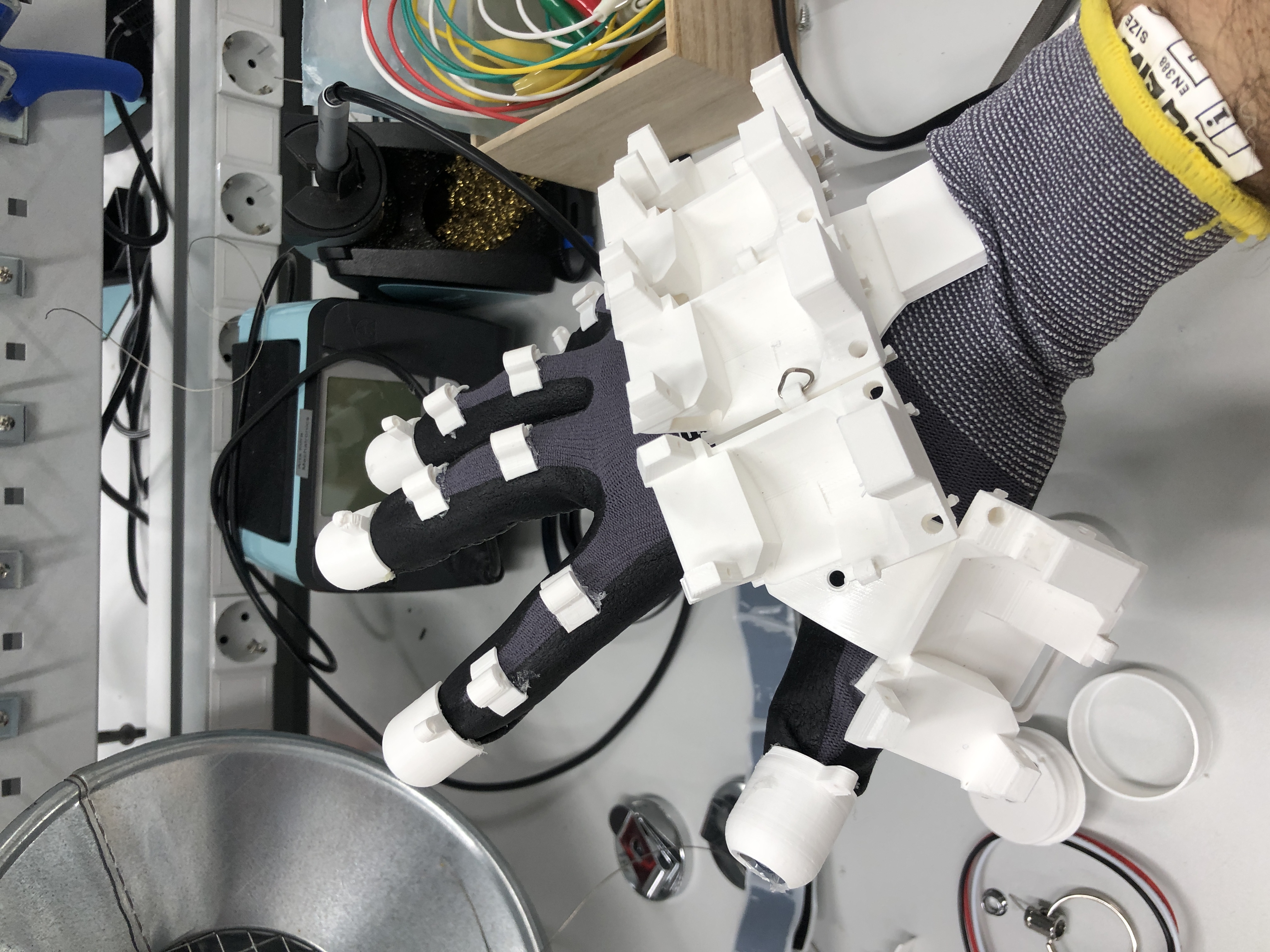
During a 6-week intensive workshop, I was able to construct one glove with 5 spring-loaded potentiometers that track the movement of each finger. I also created a sample code in SuperCollider that uses the glove as an interface to control the parameters of three different synthesizers.
The quality and aesthetic of the build are satisfactory. The spring mechanisms do not move smoothly or uniformly, which can add an interesting element to the performance. The glove was made using a cheap work glove from Biltema, along with springs and metal strings from retractable badge holders. Although some new parts were required, the use of salvaged materials gives the project a unique feel. I am looking forward to further developing this idea.
3D Printing
I began printing the components for the project right away. This involved a lot of learning as I needed to get access to the 3D print lab and learn the system at Aalto for the first time. I also needed to do many test prints to get all the parameters right.
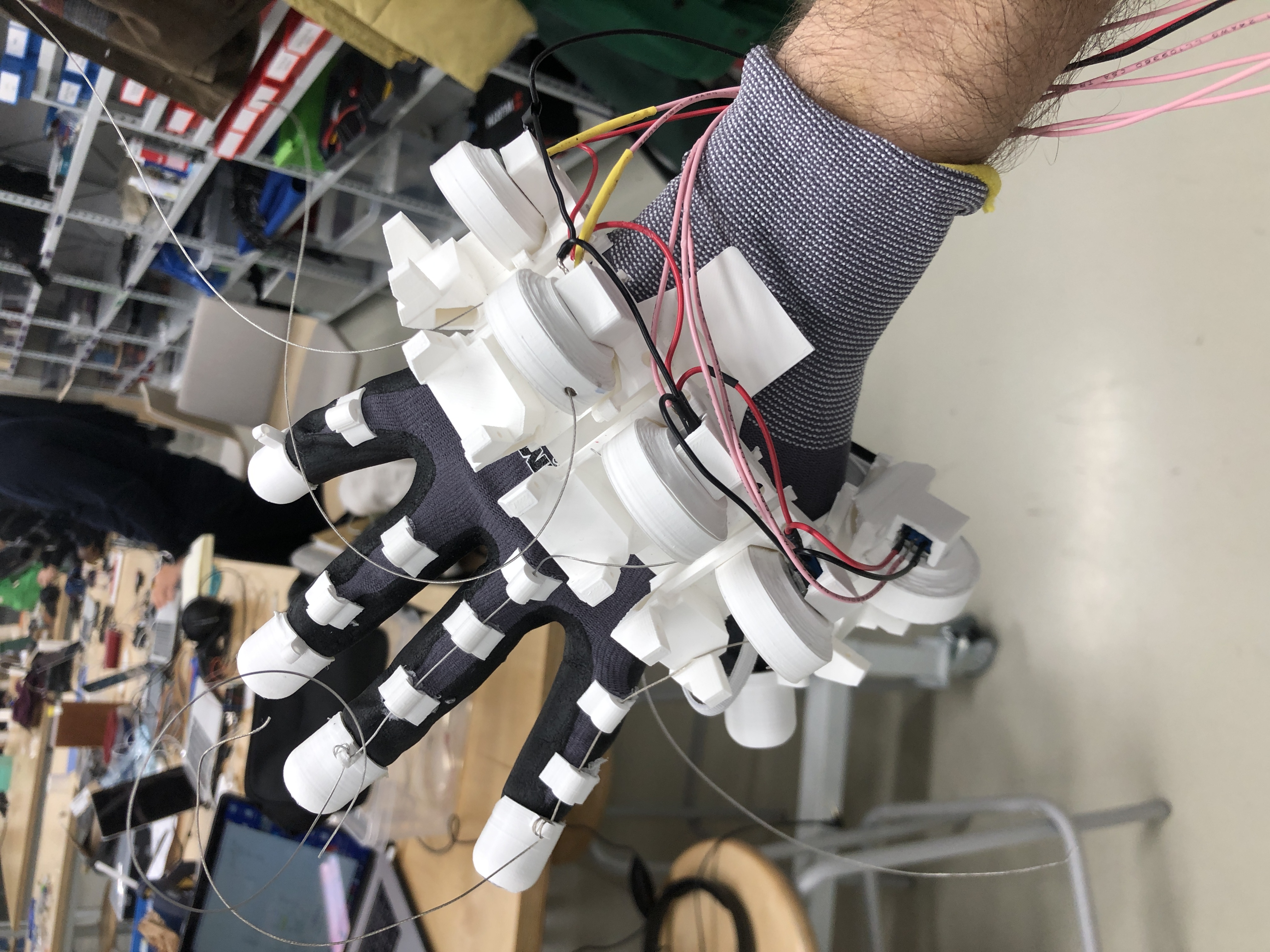
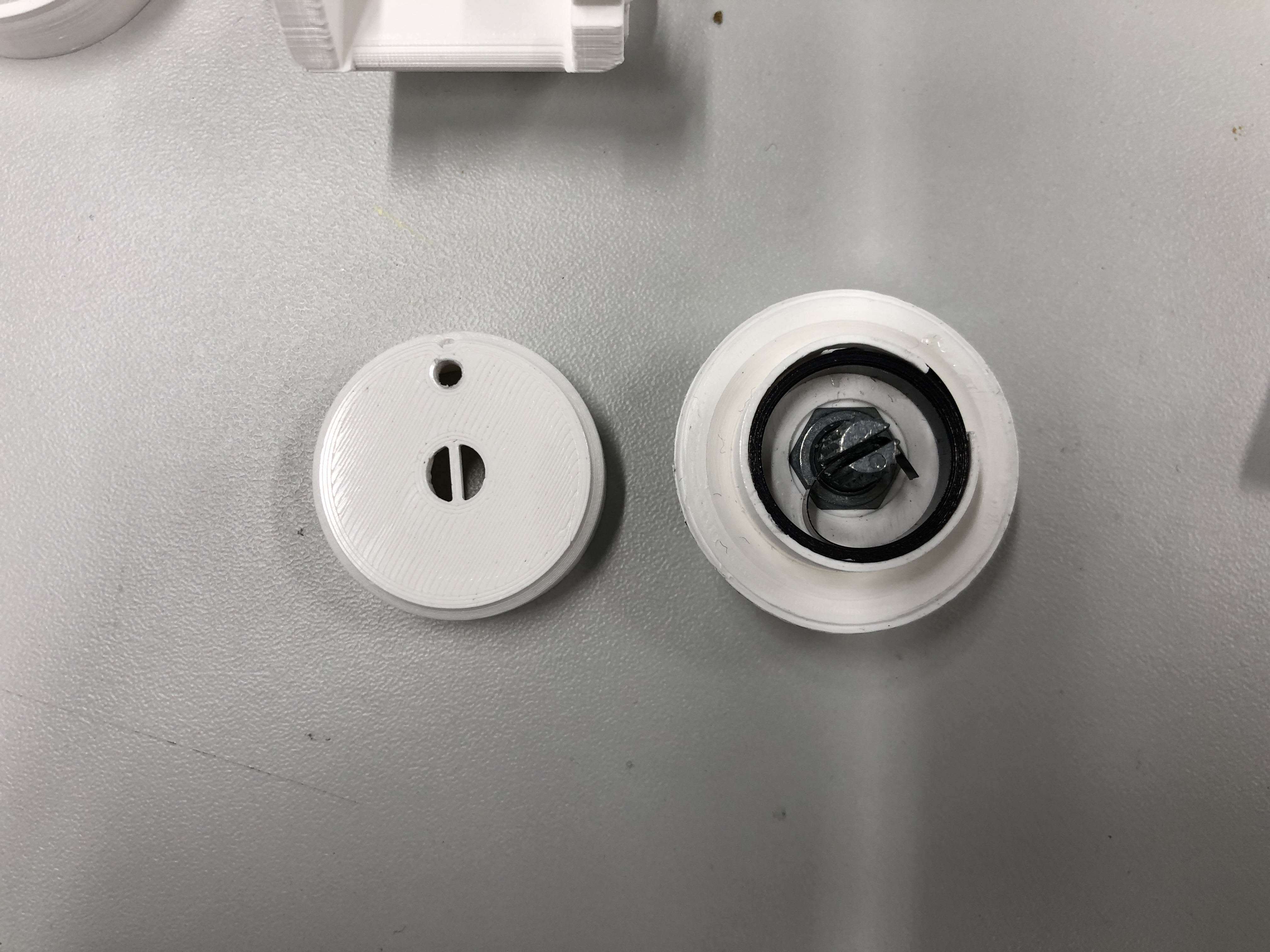
In the end, I printed about 4 days a week for 2 weeks. I tried not to print multiples until I had a good idea of the quality so I didn’t have to throw away a lot of scraps.
Assembly
The biggest obstacle to progress in this project was waiting for the components. I built out one spring-loaded pot and tested some of the firmware code on an Arduino. In retrospect, my time would have been better spent with SuperCollider.
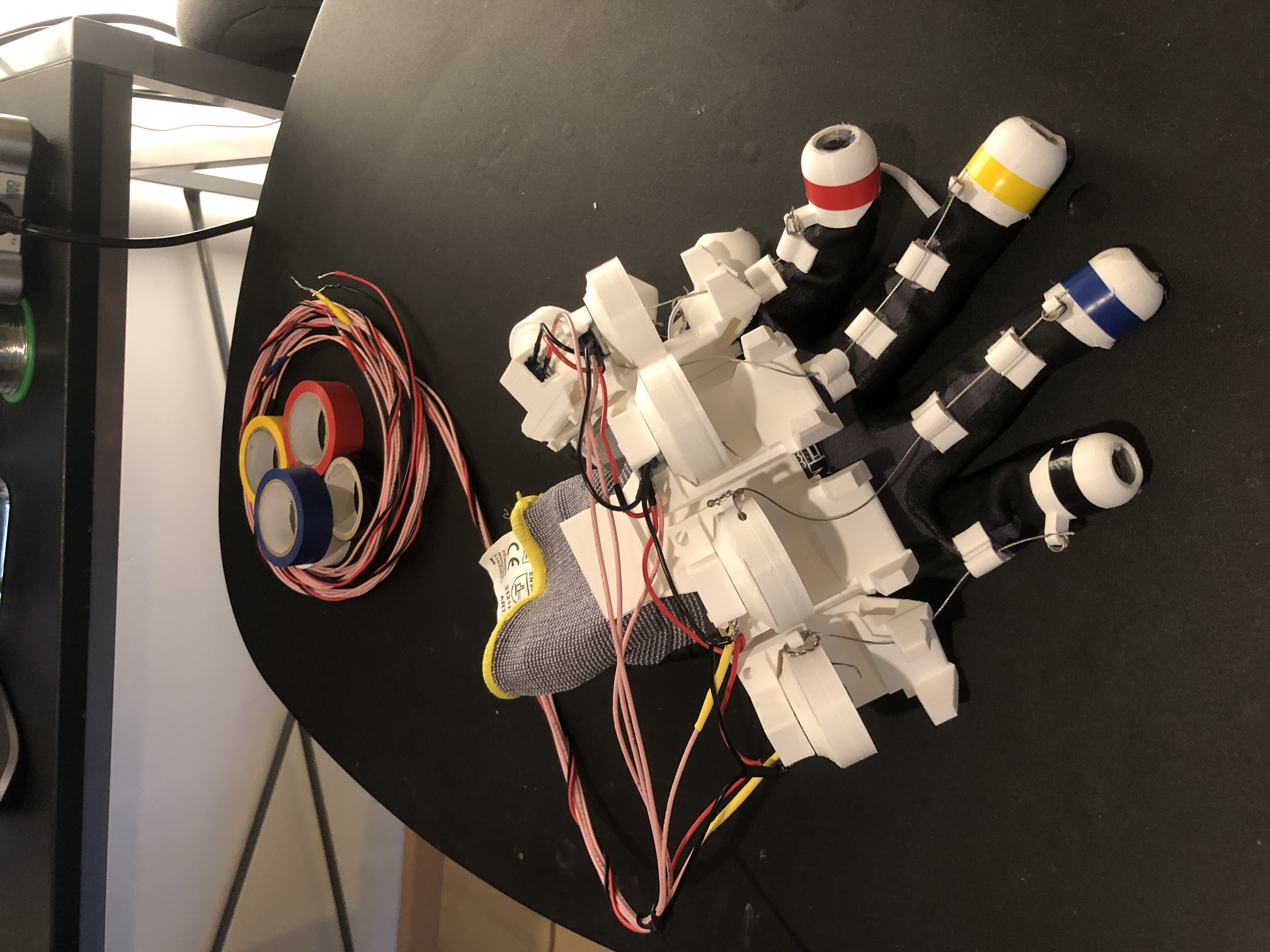
The wiring and threading of the glove were labor-intensive. With repetitive tasks, you usually improve over time. However, since I was only making 5 of everything, I was done as soon as I started to get proficient. In any case, once I had all the necessary parts, the build was pretty straightforward.
I veered away from the lucidgloves project pretty heavily at this point when I began wiring the glove. Instead of using the ESP32, I decided to run the output straight into bela’s analog inputs. This allowed me to make music directly when time was of the essence.
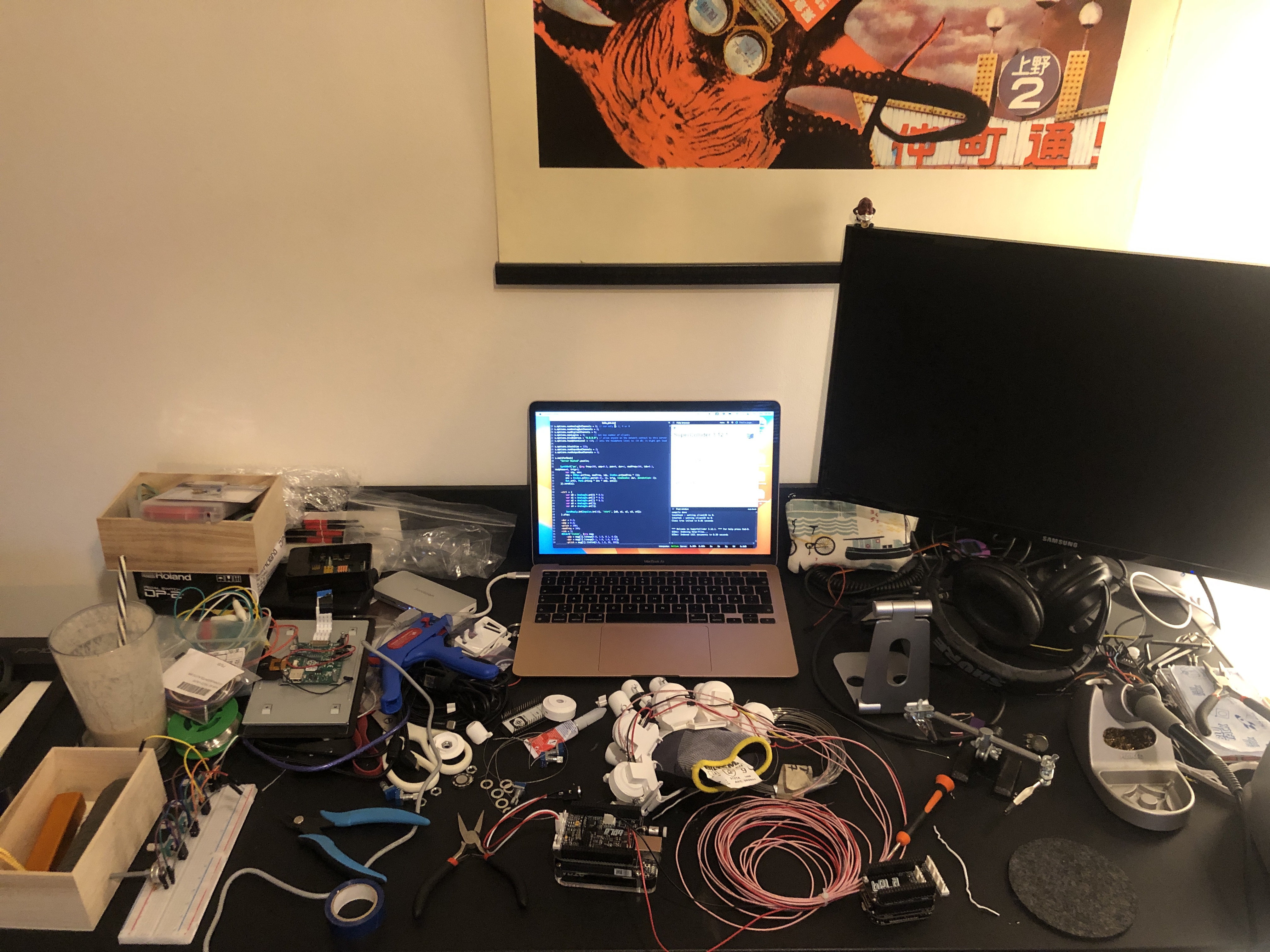
SuperCollider
The SuperCollider code instantiates 3 different FM synths and assigns each one to a melodic sequence. The speed of each sequence is controlled consecutively by the index, middle, and ring fingers. The thumb controls the starting frequency for all of the synths (pulling your thumb forward causes the pitch to rise and vice versa). Finally, the pinky controls the modulation frequency used across all 3 synths.
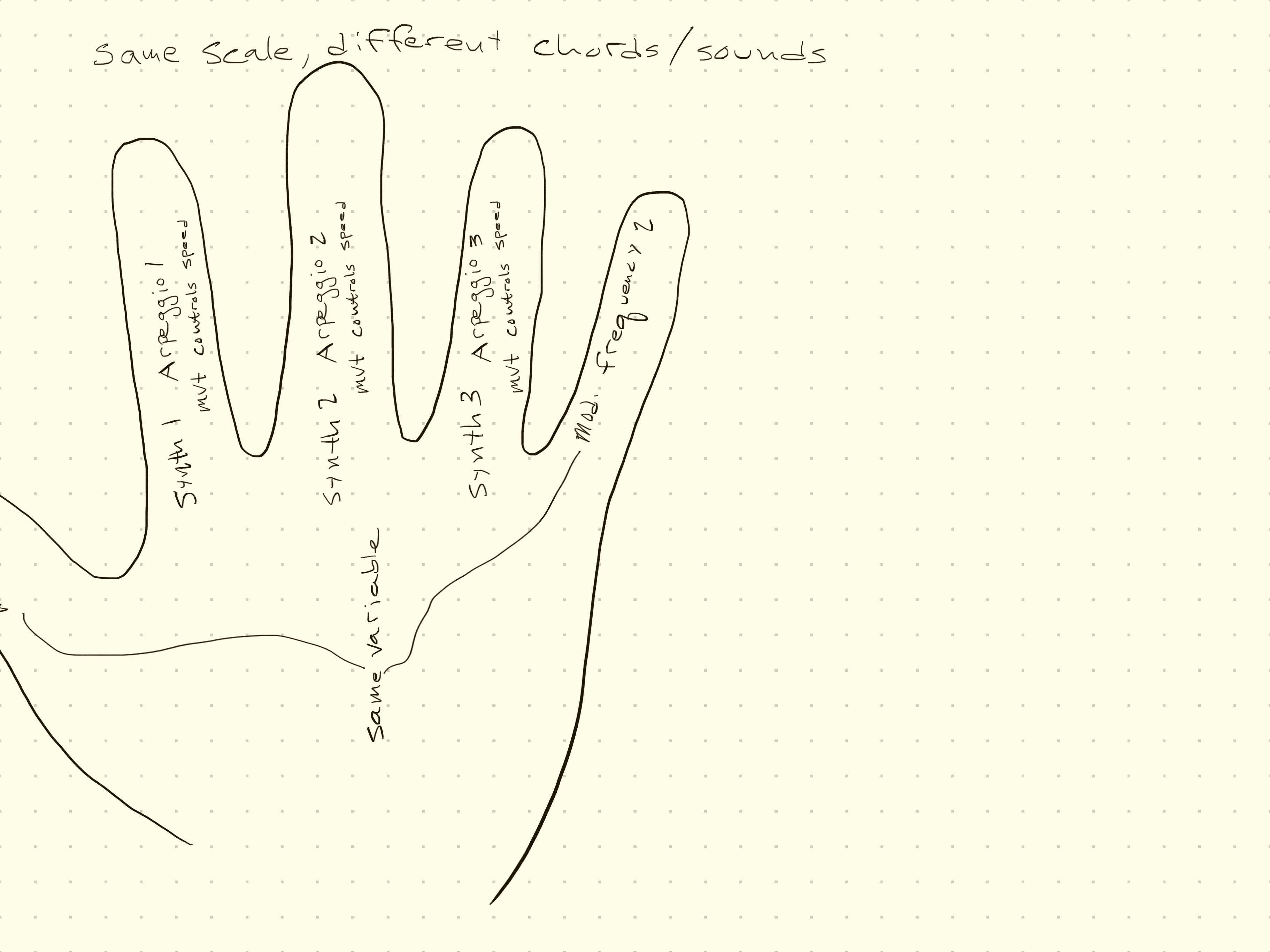
Demonstration
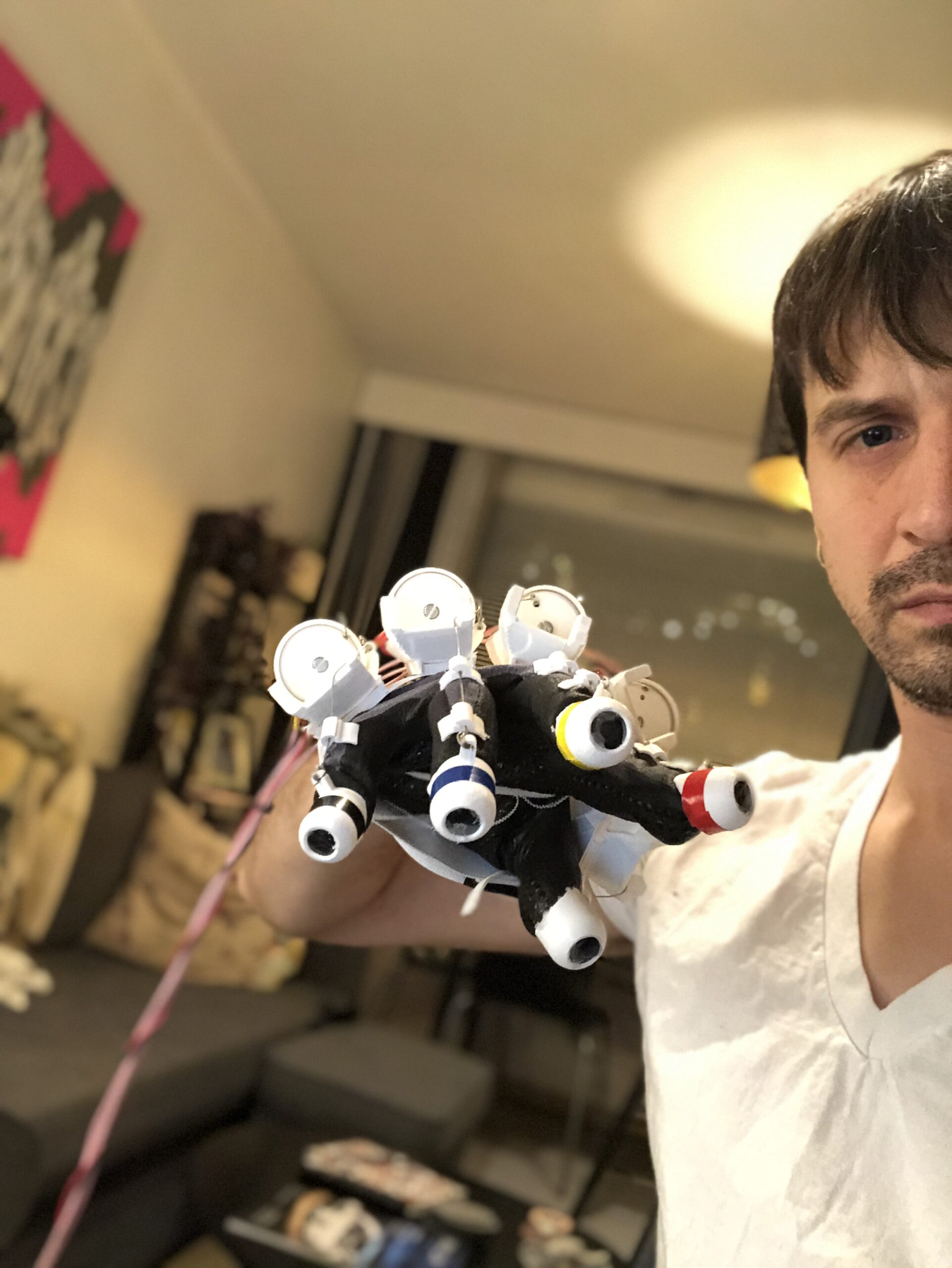
The glove is in good shape at the time of this writing and nothing broke during the demo! Although I didn’t implement a lot of what I set out to, I got a good start on a project that interests me quite a lot. This is the first mechanical project I’ve done, so there was a bit of a learning curve for me to understand the design but I am glad I took on the challenge. I really hope to continue development soon and often.